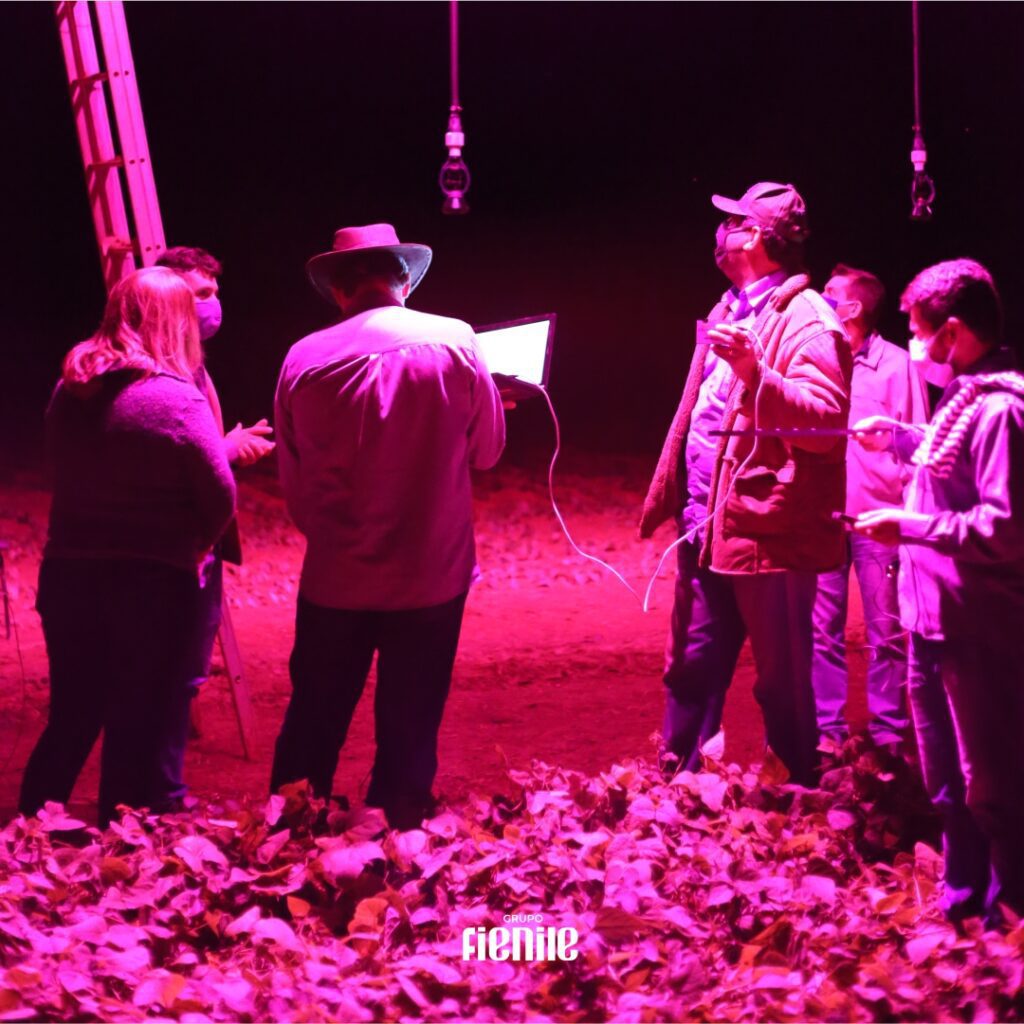With just 40 days of irrigation using artificial light, during flowering and the beginning of grain filling, increases of 66% in soybean production have already been projected.
LIGHT SUPPLEMENTATION

Human dispersion and development across Earth were essentially influenced by the search for survival, in such a way that today man occupies all regions of the planet. However, although your establishment is always dependent on the availability of food, not everyone has satisfactory and adequate access to food. Currently, the world population is about 7.76 billion people (worldometers.info, 2020), and about one in nine people in the world does not have enough to eat (World Food Programme, 2019).
Responsibility of agriculture
This situation of food scarcity is even more pronounced in several African and Southeast Asian countries. Although food distribution problems are aggravated by political issues, conflict situations and production waste, the quantity of food ends up being insufficient.
However, a greater food supply through greater agricultural productivity (production per area) could mitigate the problems of this scarcity, as well as reduce production and final product costs for the consumer. This increase in agricultural production must, however, be supported by ecological (sustainable) and social principles to serve, fairly and equitably, a growing population.
However, the evolution of agriculture has made it possible to considerably increase agricultural production, allowing more people to have access to food in quantity and quality. However, considerable advances in agricultural production have always been linked to the opening of new areas, negatively altering several biomes through which agriculture passed or was established.
The importance of soy
The soybean agricultural culture stands out in terms of occupied area (36.8 million hectares) and quantity of production (122.2 million tons) in Brazil (Conab, 2020), and this highlight is due to it being a of the most efficient crops for the production of high-quality and cost-effective protein.
The protein contained in soy will later be used in feed and then converted into animal protein – this is the main route for Brazilian soy in China.
Record yields of up to 149 (CESB, 2017) and 213 (UGCE, 2019) bags of soybeans per hectare have already been recorded in Brazil and the United States, respectively. However, for these records to be achieved, a set of factors must be provided in appropriate quantities and at the appropriate time.
Before planning cultivation factors, such as defining the genetics to be cultivated and phytosanitary management, the crop needs to be fully attended to by primary factors, such as nutritional management (soil), irrigation and availability of light energy.
Failure to fully comply with any of these factors significantly affects final grain production, reducing average productivity (national average yield: 55.4 sc ha-1 of soybeans, Conab, 2020) and, consequently, the availability of food for population.
Irrigation Light
Until recently, factors such as genetics, control of weeds, insects, pests and diseases, irrigation and mineral nutrition management could be managed to raise the productive ceiling of an area. However, the supply of large-scale light energy has always been dependent on sunlight.
Natural light varies daily and according to the seasons and the latitude of the region. In agricultural regions at higher latitudes (for example, the United States and Europe), seasonal variations in luminosity are even more significant, allowing, in most of these regions, only one large agricultural harvest per year.

Photo: Adriana Mendes
Evaluating this limitation and applicable solutions, light supplementation for agricultural cultivation is being proposed and practiced through the installation of high-efficiency artificial lighting panels (Light Emitting Diode) on irrigation pivots. This proposal, developed by the Fienile® Group, allows not only to irrigate water in the conventional sense, but also to irrigate light over the entire crop in a completely controllable way.
This proposal, unprecedented due to the scale of application, is generating results in a traditional irrigation pivot on a property in the municipality of Monte Carmelo (MG) – the first pivot in the world with water and electricity irrigation. With just 40 days of irrigation using artificial light at night – and during the day in cloudy periods – during flowering and the beginning of grain filling, increases of approximately 66% in soybean production have already been projected, from around 71 sc ha -1 (farm standard) for up to 118 sc ha-1 in the treatment where artificial lighting was added to the farm standard (2019/20 harvest).
Validation of work
This production above the traditional standard also required adjustments in crop management, from sowing to harvest, in the amount and timing of application of essential and beneficial nutrients. There is also the possibility of reducing the application of mineral sources – generally saline and degrading soil dynamics – by applying more sustainable sources, such as remineralizers and addition of organic matter, increasing the efficiency of existing mineral fertilizers and green manures intended for fixing nutrients in the soil.
Article published by: https://revistacampoenegocios.com.br/irrigacao-de-luz-o-proximo-grande-salto-da-producao-agricola/
BRENO AZEVEDO
AGRONOMIST ENGINEER, DOCTORATE IN PHYTOTECHNISM
ERNANE MIRANDA LEMES
AGRONOMIST ENGINEER, PHYTOPATHOLOGIST, PHD
MATHEUS IIDA
FOUNDING PARTNER OF THE FIENILE GROUP




